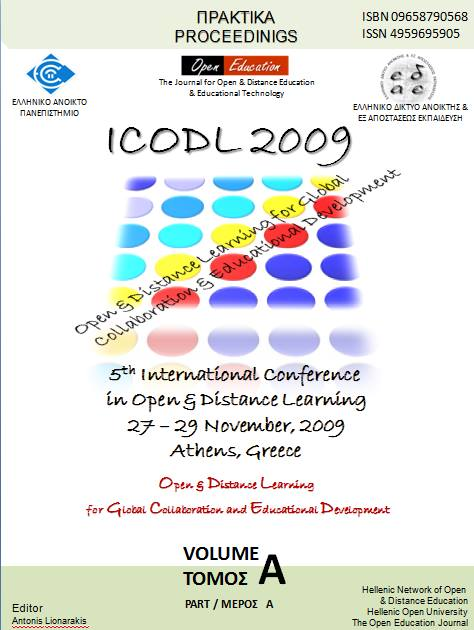The roles of teachers and students in computer supported collaborative learning among distance learners
Περίληψη
The effectiveness of group learning in asynchronous distributed learning groups depends on the social interaction that take place. This social interaction affects both cognitive and socio-emotional processes that take place during learning, group forming, establishment of group structures and group dynamics. Individual differences play an important role in establishing social interaction in a virtual learning environment. This article will explore the roles of teachers and students on computer supported collaborative learning among adult distance learners. Theoretical framework that will be used is based upon an ecological approach to social interaction, centering on the concept of social affordances, the concept of sociability of CSCL environments and social presence theory. 130 students from an open university in Malaysia were asked to answer the questionnaire designed for the study. These learners were required to participate in online discussions as part of their course requirement. The findings show that individual differences, motivation, attitude play important roles in online interaction. Teachers’ roles, too, were found to be very important in enhancing collaboration among the distance learners. Teachers’ roles include preparing teaching and learning activities for the students. Learning in a high-tech, global environment presents new roles and responsibilities for both teacher and learner.
Λεπτομέρειες άρθρου
- Ενότητα
- Άρθρα
Οι συγγραφείς των άρθρων που δημοσιεύονται στα πρακτικά του συνεδρίου για την Ανοικτή και εξ Αποστάσεως Εκπαίδευση διατηρούν τα δικαιώματα πνευματικής ιδιοκτησίας επί των άρθρων τους. Άρθρα που δημοσιεύονται στα πρακτικά διατίθενται με άδεια Creative Commons 4.0 και σύμφωνα με την άδεια μπορούν να χρησιμοποιούνται ελεύθερα, με αναφορά στο/στη συγγραφέα και στην πρώτη δημοσίευση για μη κερδοσκοπικούς σκοπούς και με δικαίωμα τροποποίησης μόνον με παρόμοια διανομή (αν αναμείξετε, τροποποιήσετε, ή δημιουργήσετε πάνω στο υλικό, πρέπει να διανείμετε τις δικές σας συνεισφορές υπό την ίδια άδεια όπως και το πρωτότυπο).



